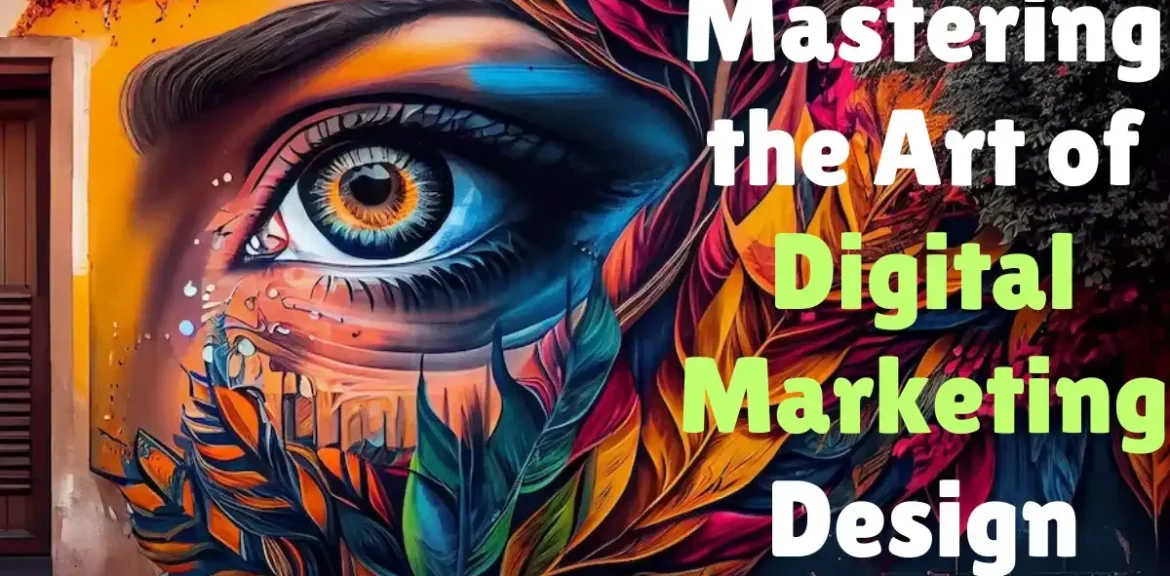Content reigns supreme in the rapidly evolving field of digital marketing, but design is unquestionably queen. The visual language is what draws consumers in, conveys feelings, and ultimately directs them toward your objectives. This blog explores the potent combination of digital marketing design, showing how effective visuals may improve your website online marketing presence and advance your marketing campaigns.
Understanding the Powerhouse Duo
Digital marketing encompasses a wide range of strategies—SEO, content creation, social media engagement, and email marketing—all focused on reaching your target audience in the vast digital landscape. Design, on the other hand, is the artistic expression that breathes life into your marketing initiatives. It’s the user interface (UI) of your digital marketing websites, the graphics in your social media posts, the layout of your emails, and the overall visual identity of your brand.
Why Design Matters in Digital Marketing
Here’s why effective design is non-negotiable in the digital marketing arena:
- First Impressions: In the digital age, attention spans are fleeting. Users form an opinion about your brand within milliseconds of landing on your digital marketing website design or encountering your ad. Compelling design instantly grabs attention, conveying professionalism and trustworthiness.
- Emotional Connection: Humans are visual creatures. Engaging visuals evoke emotions, create a sense of connection with your brand, and leave a lasting impression.
- Clarity and Navigation: A well-designed interface is intuitive and user-friendly. Users can easily find the information they need, navigate through your website seamlessly, and complete desired actions without frustration.
- Brand Storytelling: Design goes beyond aesthetics. It’s a powerful storytelling tool. Through strategically chosen colours, imagery, and layouts, you can communicate your brand values, personality, and unique selling proposition.
- Increased Engagement: Eye-catching visuals stop the scroll and encourage users to delve deeper. Whether it’s an infographic on your blog or a visually appealing social media post, strong design fosters engagement and interaction with your content.
- Improved Conversion Rates: A well-designed website or landing page doesn’t leave users guessing. Clear calls to action (CTAs), paired with compelling visuals, guide users towards conversions, boosting sales or lead generation.
Essential Design Principles for Digital Marketing
Now that we’ve established the importance of design in DM, let’s explore some key principles to keep in mind:
- Know Your Audience: Before diving into design elements, understand who you’re targeting. What colours resonate with them? What imagery will capture their attention? Research and tailor your design choices to their preferences.
- Prioritize User Experience (UX): Design is not just about aesthetics; it’s about user experience. Focus on clean layouts, intuitive navigation, and a responsive design that adapts seamlessly across different devices (desktop, mobile, and tablet).
- Hierarchy and Visual Flow: Guide the user’s eye with a clear hierarchy. Use elements like size, colour, and contrast to prioritize important information. Create a visual flow that encourages users to follow your call to action (CTA).
- Brand Consistency: Consistency is crucial for building brand recognition. Maintain a consistent colour palette, typography, and overall design aesthetic across all your digital marketing channels.
- High-Quality Visuals: Low-resolution images and amateurish graphics scream unprofessional. Invest in high-quality visuals, whether it’s stock photography or original graphics.
- Mobile-First Approach: With the ever-increasing dominance of mobile browsing, prioritize mobile-first design. Ensure your website, emails, and marketing materials are optimized for a seamless user experience on smartphones and tablets.
- Data-Driven Decisions: Don’t just design for aesthetics. Use analytics tools to track user behaviour and identify elements that resonate best with your audience.
Design Tools for Digital Marketers
While some DM professionals may choose to collaborate with freelance designers or design agencies, there are several user-friendly tools available for creating captivating visuals in-house:
- Free Design Tools: Canva, Adobe Spark, and Pablo by Buffer
- Photo Editing Tools: GIMP (free), Adobe Photoshop (paid)
- Infographic Design Tools: Visme, Piktochart
Optimizing Design for Different Digital Marketing Channels
Design plays a crucial role in each aspect of your digital marketing strategy. Here’s a breakdown of design considerations for various channels:
- Website Design: User-friendly navigation, clear calls to action (CTAs), high-quality visuals, and a design that reflects your brand identity are key.
- Social Media Marketing: Eye-catching graphics, engaging video content, and strong visual storytelling on social media platforms like Instagram, Facebook, and Twitter,
Conclusion
In today’s competitive digital planet, strategic imperatives demand smart design, which is no longer an afterthought. Using visual communication to its full potential will help you build a stronger brand, connect with more people, and get real results.
FAQ
A. Design plays a crucial role by capturing attention, communicating brand messages, and driving engagement and conversions.
A. Commonly used tools for design in digital marketing include Adobe Creative Suite (Photoshop, Illustrator, and InDesign), Canva, Sketch, and Figma.
A. Examples of successful design in digital marketing campaigns include Nike’s “Just Do It” campaign, Airbnb’s rebranding efforts, and Coca-Cola’s personalized “Share a Coke” campaign.





